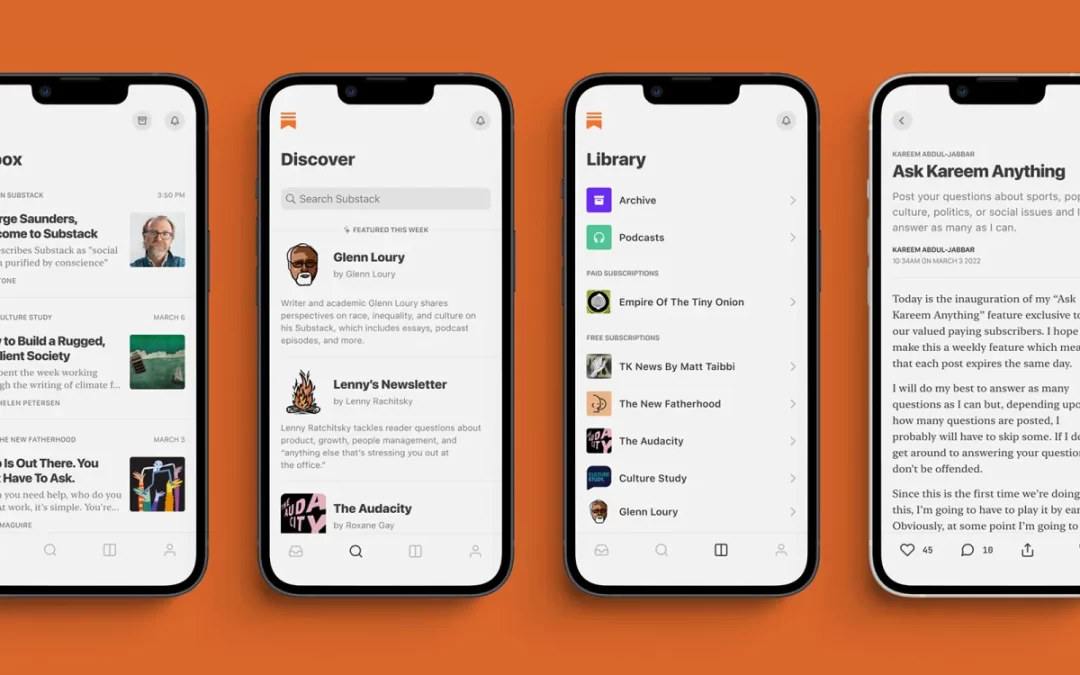Fostering meaningful relationships with journalists is an integral part of any brand’s media relations program. In the crowded inboxes of reporters today, it’s no surprise that media relationships can make all the difference when it comes to breaking through to a reporter with client stories and news.
One way to establish and nurture these relationships is by tuning into writers on Substack. At a high level, Substack is a platform for email newsletter subscriptions, with a mix of free and paid options. Since its inception in 2017, Substack has grown to be a valuable resource for journalists and PR professionals to work more effectively together, especially within the past few years with the evolving media landscape, including increased opportunities to work with freelance writers.
Substack as a Journalist Tool
Substack has surged in popularity as a journalist tool in the past few years, particularly with freelance writers. When PR professionals subscribe to certain journalists’ newsletters, they can expect to receive insights into stories they are currently working on and accepting pitching for, requests for sources, insights on the media industry, and often times, fun updates of a writer’s life, both professionally and personally.
Unlike the hundreds of journalist story queries submitted daily through Cision’s HARO or newer platforms like Qwoted, Substack gives PR professionals a personalized look into the day-to-day of what a reporter is currently working, informing them of the best ways to provide value to a writer based on their unique preferences.
These days, we find that many writers exclusively share requests for stories on Substack, rather than HARO and Qwoted, since they know the responses are more likely to be on-target and in their preferred format, especially coming from their tuned-in subscribers. PR professionals can typically find calls for pitches in the free version of a writer’s Substack.
Outside of free Substack newsletters, insights on the best ways to work with writers are often through paid subscriptions. While free subscriptions are still a great way to find relevant story opportunities, upgrading to a paid version can provide so much value to your team’s pitching efforts and future media relationship building, while supporting the work of these journalists.
Aly Walansky, the No. 1 rated food journalist of 2022 on Muckrack, publishes a weekly Industry Insights newsletter for her paid Substack subscribers that has a wealth of knowledge including the best tips for planning media events, sending PR mailers, how to plan better press trips, and more. Aly and a handful of other freelance writers, like Alice Dubin and Jill Schildhouse, also offer exclusive Zoom Q&As for their paid subscribers that address questions on the media industry and pitching preferences or cover a specific topic like the effects of generative AI on the media landscape.
Media Moving to Substack
Outside of writers who share story ideas and queries on Substack, many writers are also leveraging the platform to create their own independent media outlets, led by a regular newsletter. As newsrooms continue to cut jobs, it’s great to see media – and influential voices – monetize their incredible work on the Substack platform, with top outlets drawing $500,000 to $1 million annually.
On Substack, former Vanity Fair editor Richard Rushfield runs The Ankler, a leading source of news for the entertainment industry, and respected tech journalist Casey Newton started Platformer on Substack to cover “breaking news at the intersection of technology and democracy.” Even Kareem Abdul-Jabbar has found a home as a journalist on Substack, sharing his incredible takes on sports, politics and pop culture.
How PR professionals can leverage Substack
There is a clear benefit for PR professionals submitting to story opportunities through Substack for potential client coverage, but practitioners should also tune into PR-related Substacks as a way to foster long-lasting relationships with writers and an opportunity to be a reliable PR resource based on each writers’ individual preferences.
With Substack as a news destination, reading Substack newsletters relevant to your clients should also become a routine part of any practitioner’s news monitoring practice. As we see journalists and independent media companies on Substack continue to grow, PR professionals will benefit by learning from and engaging with these independent outlets. Be sure to also educate clients on the value of being included in these newer outlets, as more and more media shift to newsletters to deliver news.
Subscribing and reading through Substack subscriptions is a great daily practice, but PR professionals shouldn’t stop there. With each Substack subscription is a community to learn from and engage with. PR pros can learn so much from regularly reading and engaging. Making sure you’re liking, commenting, and being an active participant is a key step in fostering meaningful connections with writers through Substack.

